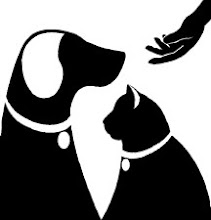After ten months on the job, I am happy to report some very positive changes that have taken place for the animals at the Animal Welfare League of Arlington. First and foremost, euthanasias have decreased by 60% over the previous fiscal year. Our positive outcome rate for dogs has increased from 80% to 91%; for cats from 70% to 85%; and for small companion animals from 79% to 97%. Our fiscal year statistics are posted on our Web site.
We have successfully treated 21 cats for ringworm and found them new homes and have adopted 45 adult cats for no adoption fee. Free adoptions of adult cats have helped reduce the time adult cats stay in the shelter and have helped prevent overcrowding which leads to disease.
Although we have had many dogs with behavioral challenges, our adoptions team and volunteers have worked with them diligently on behavior modification and have given them extended periods of exercise to help them be more comfortable and relaxed in the shelter. Wonderful people have contributed their professional expertise in training and photography to help make all of our dogs more appealing to potential adopters. And as always our adoptions staff gives follow-up support to adopters whenever needed. We continue to develop positive relationships with local rescue groups. Our recently formed Pit Crew, consisting of shelter volunteers with a staff liaison, actively promotes a positive image of the breed to help raise our adoption of pit bulls.
Through a generous donation from two dedicated volunteers, we created a Very Important Pet (VIP) Lounge in our front office to bring attention to animals that have not gained attention from potential adopters. Dogs that do not show well in our kennel receive extra socialization and are seen in a more home-like environment in the Lounge. You may also sometimes find one of our bunnies enjoying the spacious play area in the VIP Lounge.
Our Trap-Neuter-Return program for helping community cats avoids the euthanasia of healthy cats while preventing an increase in the number of feral cats in our community. We hold information workshops regularly to educate residents on the program.
These positive changes have been a group effort among staff, volunteers, board members, and donors. Every one of you can surely take pride in the part you have played in these improvements. Thank you so much for your help and support. I hope you will continue to be a part of our work in the months ahead as we continue to strive toward giving every animal in our care the best possible experience and ultimately save more lives.
Sincerely,
Neil Trent
Executive Director
Animal Welfare League of Arlington
________________________________________
Friday, July 29, 2011
Wednesday, March 16, 2011
Why Don't More Cats Wear Collars?

A recent study reported in Animal Sheltering Magazine (March/April 2011) cites an earlier study in Ohio in which only 17% of cat owners said their cats wear some form of visual identification and only 3% have microchips. No wonder it is so difficult to return lost cats to their owners!
The study also says that nationally only 2% of stray cats entering animal shelters are reunited with their owners. The League's record is much better: we reunite 19% of stray cats with owners. We would of course like to make that percentage much higher. The League microchips all our cats prior to adoption, and our adoption contract requires that adopters ensure that their cats always wear elastic safety collars and identification tags.
The focus of the study was to find out what percentage of pet cats would wear collars for six months and still have functioning microchips. 538 cats were microchipped and given collars. At the end of six months, 73% of cats were still wearing their collars and had functioning microchips. The study also found that owners who felt more positively about their cats wearing collars were more likely to have cats who succeeded in wearing them longer.
Many more lost cats could get back home if their owners were diligent about keeping collars with identification on them. Even indoor cats (all pet cats should be indoors) need to wear identification in case they get outside by accident. It happens all the time: we get calls almost daily about indoor cats that have accidentally gotten outside and are not wearing identification.
So cat lovers, please microchip your pet cats and make sure that they always wear elastic safety collars with identification.
Subscribe to:
Posts (Atom)
